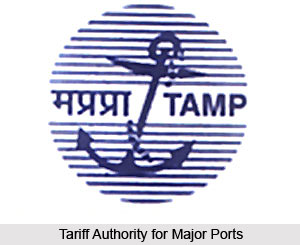 The Tariff Authority for Major Ports (TAMP) was constituted in April 1997 to provide for an independent Authority to regulate all tariffs, both vessel related and cargo related, and rates for lease of properties in respect of Major Port Trusts and the private operators located therein. The Major Ports Trust Act, 1963 was amended by Port Laws (Amendment) Act 1997 to constitute the TAMP.
The Tariff Authority for Major Ports (TAMP) was constituted in April 1997 to provide for an independent Authority to regulate all tariffs, both vessel related and cargo related, and rates for lease of properties in respect of Major Port Trusts and the private operators located therein. The Major Ports Trust Act, 1963 was amended by Port Laws (Amendment) Act 1997 to constitute the TAMP.
Organisational Structure
The Tariff Authority for Major Ports comprises a Chairperson and two Members appointed by the Central Government. Presently, the Head Quarters of the Authority is in Mumbai.
The Tariff Authority for Major Ports has jurisdiction only over major port trusts and private terminals therein. It is responsible for prescribing the rates for services provided and facilities extended by them and also rates for lease of port trust properties. This Authority is empowered not only to notify the rates but also the conditionalities governing application of the rates. The endeavor of the Authority is to emphasise user-orientation in its approach to work and thereby motivate all concerned to give it the benefit of their thinking. In conformity with its commitment to let the participative process preponderate in its working, special care is taken to give adequate opportunities for users to represent their interests. Accordingly, interactive sessions are organized at the port level with users directly. Besides, joint-hearings are held at the port level in the interest of natural justice before the Authority decides individual tariff cases. Every notification, declaration, order and regulation of the Authority made under the MPT Act is published in the Gazette of India.
Grievance Redressal
The orders notified by the Tariff Authority are final. There is no provision for appeal against these orders within the system. Aggrieved parties will have to approach the one of the High Courts of India for Redressal. This Authority, however, undertakes review of orders, under exceptional circumstances. The Union Government has the power to modify the Authority`s Order or issue `policy directions` on matters relating to port pricing.
This article is a stub. You can enrich by adding more information to it. Send your Write Up to content@indianetzone.com




















